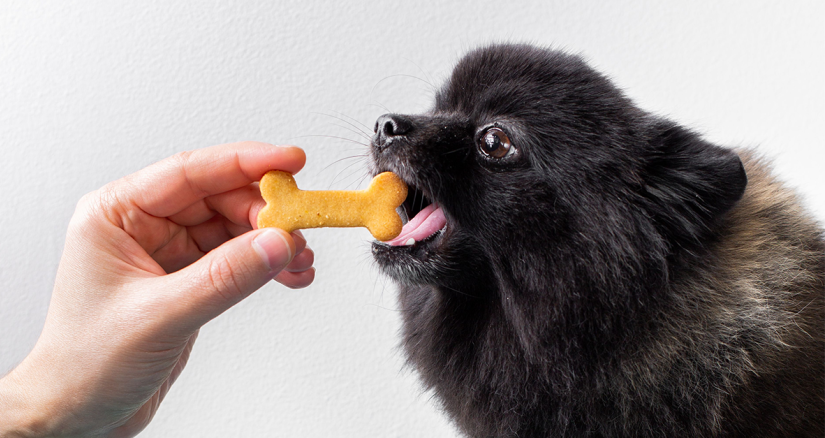
The History of Pet Food: A Journey Through Time
From feeding table scraps to the various specialty diets available today, the way pets are fed has changed dramatically over thousands of years. This evolution reflects the evolving relationship humans have with pets and the many advances in nutritional science.
Among the first animals to be domesticated was the dog around 15,000 years ago in Siberia.1 At that time, the relationship between humans and dogs was mutually beneficial; the humans got protection and companionship, while the dog was fed, likely from the scraps of the human’s meal.2
Following the domestication of the dog was the cat, which was discussed in a previous article, “The Role of Cats in Ancient Egypt: From Gods to Mummies.”3 Cats were domesticated in Egypt around 9,000 years ago to help control vermin in grain stores. These felines were also fed scraps to supplement their diet. 4
The Industrial Revolution: The Rise of Commercial Pet Food
How pets were fed was transformed by the Industrial Revolution during the mid-18th century through the early 19th century. Changes such as urbanization increased leisure time and consumer culture led to an increase in pet ownership. This increase of pets in homes gave rise to the first commercial pet food.
In 1860, an American named James Spratt created the first commercial dog biscuit in England. Spratt’s biscuits, or “Dog Cakes,” were a combination of meat, wheat and vegetables. These biscuits were designed for nutrition and convenience, laying the foundation for the modern pet food industry.5
Following Spratt’s success, the pet food industry expanded rapidly. In 1922, the Chappel brothers of Rockford, Ill., launched the first canned dog food called Ken-L-Ration, revolutionizing pet nutrition by improving nutrient preservation.6 Its main ingredient was horsemeat, which was considered an acceptable ingredient at the time. This innovation reflected a broader societal shift in which pets were increasingly seen as family members deserving of specialized care.
World War II: Growth and Innovation
After World War II, there were significant changes in manufacturing processes and pet owner habits. Pet food companies were able to market their products more aggressively through mass production. Ralston-Purina produced the first dry kibble product under the name Dog Chow in 1956 and offered a cost-effective and convenient option for pet owners.7
In the 1960s and 1970s, there was a surge in animal nutrition research that led to the rise of specialized diets to address health issues in pets.8 Manufacturers began creating products that emphasized health conditions and life stages.
By the late 20th century, pet owners became increasingly aware of their animals’ dietary needs, paralleling trends in human health and wellness. The emergence of premium and natural pet foods catered to this growing consumer consciousness. Brands gained popularity by offering grain-free and high-protein options made from natural ingredients, highlighting the absence of artificial preservatives.9
This shift coincided with societal trends such as transparency in labelling. The quality of ingredients became a common concern as pet owners began to focus on ethical sourcing and high-quality nutrition.
21st Century: Individual Pet Needs
Today, the pet food industry is a multibillion-dollar market characterized by a vast array of products designed to meet individual pets’ needs. Technology is being used increasingly to produce tailored diets based on these needs.8
Advances in nutritional science will continue to influence the pet food industry. These findings will allow for more specialized and scientifically developed options.
The nature of the relationship between pet and owner has driven the pet food industry since the dawn of domestication. The evolution of pet diets highlights changes in our understanding of nutrition and societal shifts. As we look toward the future, the health and well-being of pets will certainly continue to shape the pet food industry.
References
- Gorman, J. (2021, January 25). In Ice Age Siberia, a meeting of carnivores may have given us dogs. The New York Times. https://www.nytimes.com/2021/01/25/science/dogs-Siberia-wolves.html
- Driscoll, C. A., Macdonald, D. W., & O'Brien, S. J. (2007). From wild animals to domestic pets: An evolutionary view of domestication. Proceedings of the National Academy of Sciences, 104(25), 9931–9936. https://doi.org/10.1073/pnas.0901586106
- Bouldin, B. (2024, July 22). The role of cats in ancient Egypt: From gods to mummies. BSM Partners. https://bsmpartners.net/insights/the-role-of-cats-in-ancient-egypt/
- Cammack, B. R. (2023, July 17). The evolution of pet food: From table scraps to extruded kibble. NorthPoint Pets & Company. https://www.northpointpets.com/history-of-pet-food/
- Walker, R. (2014, August 1). Who made that dog biscuit? The New York Times Magazine. https://www.nytimes.com/2014/08/03/magazine/who-made-that-dog-biscuit.html
- Phillips, T. (2014, March 12). Learn from the past – Petfood Industry. https://www.petfoodindustry.com/production/article/15450890/learn-from-the-pastpetfood-industry
- Know Purina | Discover our history. (n.d.). https://purina.com.tt/purina/know-purina/history#:~:text=1956%20%2D%20PURINA®%20DOG%20CHOW,exclusive%0packaging%20for%20the%20market
- Coffey, D., Dawson, K., Ferket, P., & Connolly, A. (2016, January 20). Review of the feed industry from a historical perspective and implications for its future. Journal of Applied Animal Nutrition, 4, 1–12. Cambridge Core. https://www.cambridge.org/core/journals/journal-of-applied-animal-nutrition/article/review-of-the-feed-industry-from-a-historical-perspective-and-implications-for-its-future/A655939BDBB386140F15ECB577F5711C
- White, B. L. (2023). Insights-driven development of humanized foods for pets. Meat and Muscle Biology, 6(3), Article 14397, 1–12. https://doi.org/10.22175/mmb.14397
Follow us on LinkedIn for the latest updates on all things happening here at BSM Partners.
About the Author
Bill Bouldin is a Product Innovation Manager at BSM Partners. He has experience in product development and quality in pet and human food. Bill enjoys woodworking in his spare time.
This content is the property of BSM Partners. Reproduction or retransmission or repurposing of any portion of this content is expressly prohibited without the approval of BSM Partners and is governed by the terms and conditions explained here.